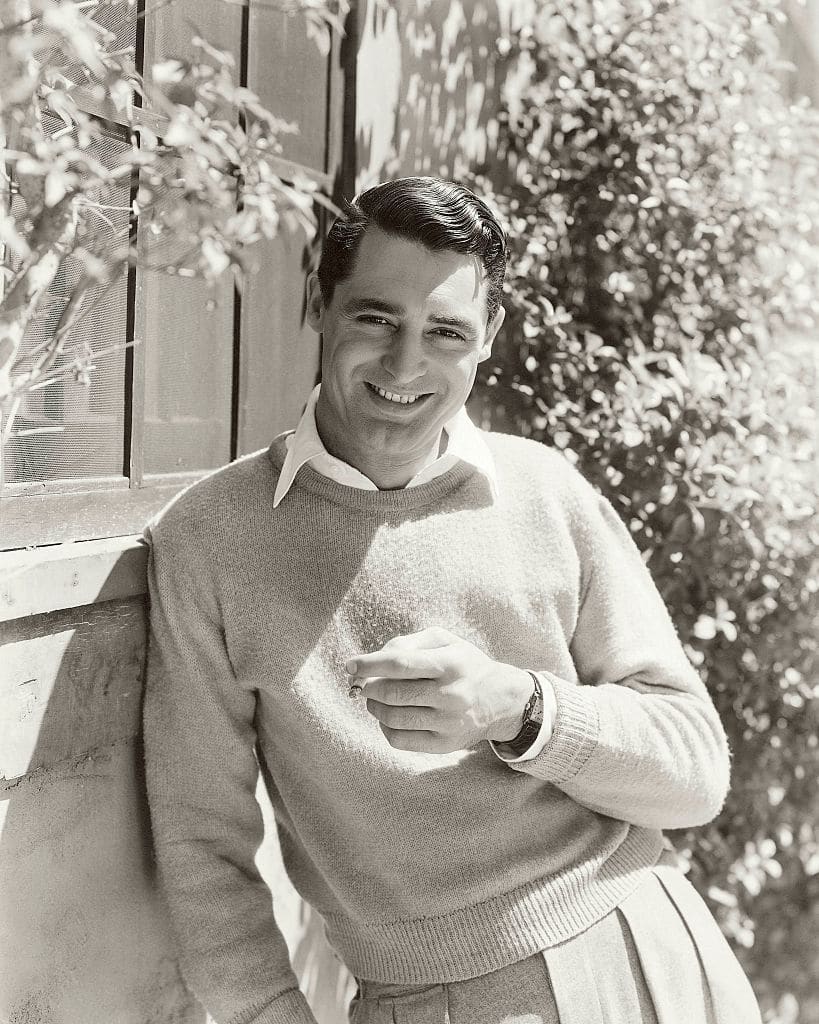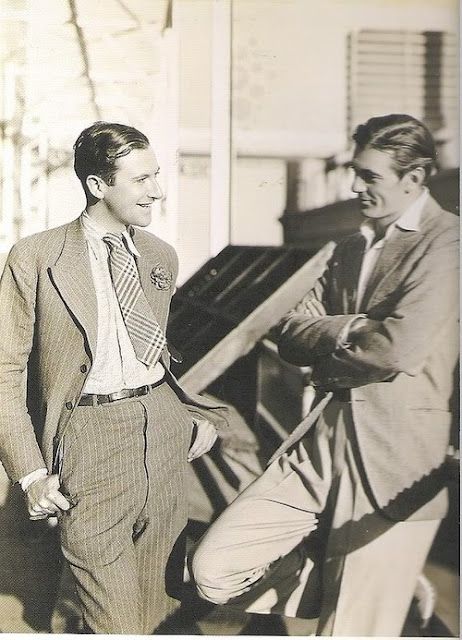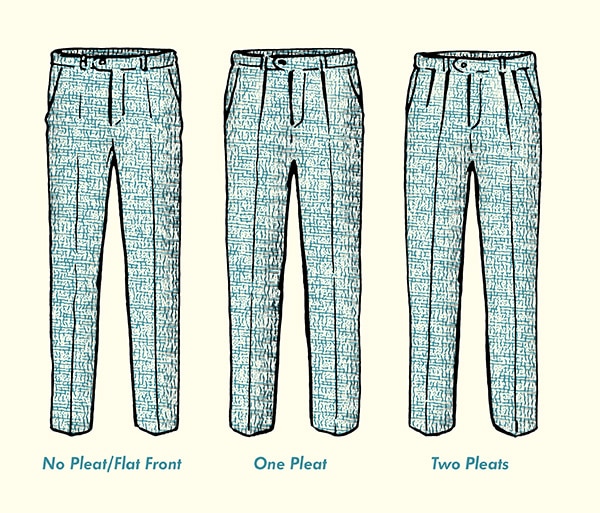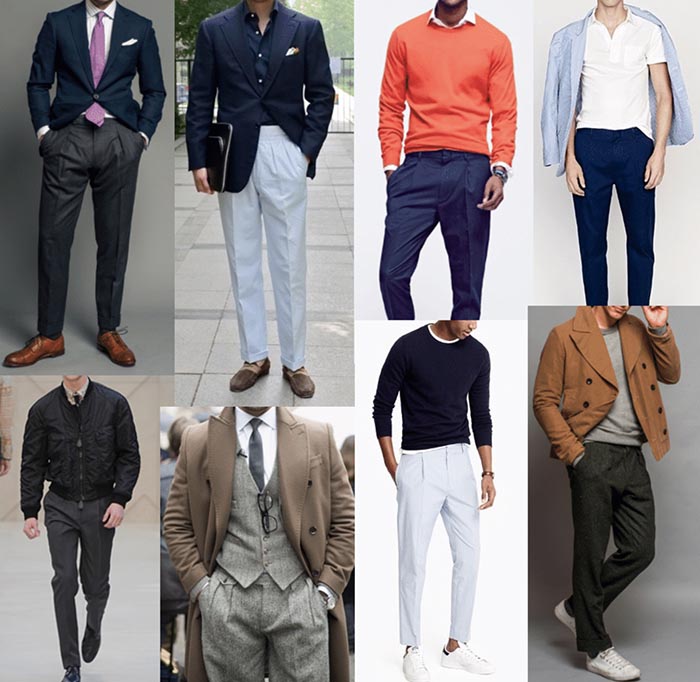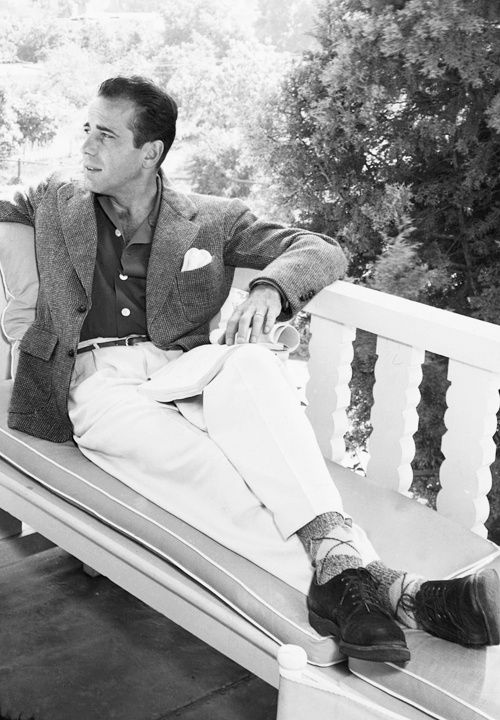The other day I was getting my suit altered by my 96-year-old tailor, Sherman Ray, and as he is wont to do, he was regaling me with stories of how he escaped the Holocaust and won first place in weightlifting at the Senior Olympics (he’s a really interesting and inspiring character — look for a video about his life coming soon). He also offered up some opinions on the current state of men’s style. Specifically, on the subject of pleats. Even more specifically, on the unfortunate fact that too many men are foregoing them on their trousers.
“If you’ve got big legs or a bigger waist, you need pleats!” Sherman empathically told me. “A lot of younger men want the flat front because it’s in style, but if you’ve got big legs, the flat front is just going to make your pockets stick out — and that looks bad — and it puts a lot of wear and tear on the seams in the pants!”
Sherman didn’t need to convince me; the suit pants I was having him let out (due to the gains I’ve been making in our shared favorite sport), were already pleated aplenty.
But the veteran tailor hasn’t found all his customers as receptive to his advice. In Sherman’s eight decades of work (he started in the biz when he was 14), he’s seen the popularity of pleated pants wax and wane. Their most recent period of popularity ran through the 80s and 90s. But beginning in the aughts, the pendulum of men’s style, as it always does, swung in the other direction. Men’s suits, pants, and clothing in general got slimmer, skinnier, and generally more streamlined. Out went pleats and in came flat front pants, which not only became men’s preferred choice of trouser, but absolutely de rigueur for the modern and stylish; flat fronts were a little more casual, and a lot more cool. Pleats became the butt of jokes, a fuddy duddy fashion, the uniform of middle-aged corporate managers and boring dads. The ghost of Gordon Gekko past.
In the last couple years, the pendulum has subtly begun to shift back once again. Pleated pants are not only showing up on runways, but in reputable and well-regarded men’s clothing stores as well.
Sherman, though, would tell you to forget about that pendulum altogether and quit slavishly following the whims of men’s style. Sure, you want to keep making little updates to your wardrobe so that it doesn’t get overly dated. But, there are generally some styles and cuts of clothing that, regardless of whether they’re in or out, will never work well for some men.
The flat front pant is one of them. If you don’t feel it’s been suiting you, today we offer a dose of re-assurance: there is a place for pleats.
What Is a Pleat?
A pleat is a fold of fabric sewn beneath the waistband on the front of a pair of trousers. In contrast, a flat-front pant lacks these folds and is made just as it sounds — the fabric of the trouser largely runs straight and clean from top to bottom.
Pleats reside on either side of the trousers’ fly seam and vary in both number and type.
The most typical number of pleats is two (a double pleat). The main pleat, which is longer and deeper, runs vertically from under the waistband to where it meets the trousers’ center crease. A second shorter, shallower crease works to keep the main crease closed, and runs closer to the trousers’ pockets, extending in length to about where they terminate.
Pants can also have just a single pleat, or three, or even more.

Pleats are also categorized into two main types: forward and reverse.
Forward pleats open inwards towards the trousers’ fly seam, and are associated with English tailoring.
Reverse pleats open outwards towards the trousers’ pockets, and are associated with Italian tailoring.
In the United States, neither the forward nor reverse style of pleat dominated men’s fashion for most of the 20th century. But beginning in the 1980s and up through today, the reverse pleat has prevailed, to the point where American men often have trouble finding forward pleated pants, at least off the rack.
What Is the Purpose of Pleats?
You may never have considered the reason for pleats. In fact, you may have thought of them as an extraneous style detail that serves no real purpose, like epaulettes or bell bottoms or the last button on a 3-button suit coat. Certainly, the overwhelming victory won by the flat front, to the banishment even of the memory of pleats, has made it seem that these now cringe-inducing folds of fabric were merely standing in the way of sartorial progress — fruitlessly billowing in the wind until the dawn of clean lines and sharp cuts could finally arrive.
But, in fact, pleats do serve a real function. When you sit, your thighs, hips, and seat naturally widen out. If you made a flat-front pair of pants wide enough to accommodate this fact, its upper region would look very baggy when you stood up. If you instead make flat front pants that look very trim and clean when you’re standing (as they are made today), then they’ll become tight when you’re sitting.
By giving the tops of pants the accordion-like flexibility to contract and expand, you solve this dilemma: the folds keep the material of trousers neat and together when a gentleman is standing, then spread to make room for his hips, seat, and thighs when he’s sitting.

There’s a reason Fred Astaire wore pleated pants almost exclusively. You too can enjoy that pleated pants feeling, and the greater freedom to move, and even do a jig, should the opportunity present itself.
Pleats not only give you more room when you’re seated, they’re more comfortable when you’re walking, standing, crouching, and bending over too — making them perfect for men in active work that still requires dressing up, or any man who likes to be able to move more freely.
The roominess and flexibility created by pleats also puts less pressure on your trousers’ seams, makes the pockets flare out less, and allows you to conceal more stuff within them.
Finally, pleated pants look a bit dressier and add a little variety to your wardrobe; you’ve probably got a lot, if not exclusively flat front pants hanging in your closet — pleats add a little something different to the mix.
So, pleated pants are very functional. But is this functionality worth the perceived tradeoff in style?
That depends on your body type.
Who Should Wear Pleated Pants?
The knock against pleats is that the folds create excess fabric, widening the hips and creating unattractive bulk, bagginess, and billowing in the upper part of your pants. Now, the bagginess is mostly just seen when you sit down, as the pleats do pull things back together when you’re standing, and few people are looking at your crotchal area when you’re sitting anyway.
But it’s true that in style, you’re usually going for the most sharp, streamlined silhouette, and pleats do inhibit this some no matter what you’re doing.
However, tight lines aren’t the only things that go into the making of a good look. So do fit and proportion, and how fabric does, or does not, drape and hang nicely on the body. And these are things that flat front pants inhibit, rather than enhance, on many men.
If you’re a slender or average-sized fellow, flat front pants will look best on you. You don’t need the additional room pleats would provide, and the extra folds of fabric would indeed be extraneous and diminish what could be a sleeker silhouette. (If you do happen into a suit that includes pleated trousers, don’t worry; your jacket will largely hide the pleats, and you’ll look fine.)
However, if you’re a larger man — and by “large” here we’re not just talking about those who are overweight, but also athletic men who have giant, tree trunk-like thighs and a squat-enhanced behind — the opposite is true: flat-front pants are very unforgiving and will make you look misshapen, like a stuffed sausage — pushing your pockets out and spotlighting your girth straining against the fabric.
If you’re a bigger guy, pleats will be your friend and flatter your body type; the roominess conceals and smooths bulges and provides a more streamlined appearance.
How to Wear Pleated Pants With Style
So, pleated pants are not only functional, but if you’re a larger guy, they can actually make you look better than the flat-front variety. But only if you know how to wear them with style.
Prioritize fit. Just because pleats lend some forgiveness to pants, doesn’t mean fit becomes unimportant. In fact, it’s even more important if you want these pants to look stylish rather than dowdy. Make sure your pleated trousers fit well in terms of length, inseam, and waist size. This isn’t always achievable with an off-the-rack garment, so take your pleated pants to the tailor for altering.
Make sure the pleats lie flat and fall smoothly. The pleats of your pants should lie flat when you stand up. If they’re pulling open when you’re standing, your trousers are too tight.
Look for a tapered leg. Tapering is another important area that can keep your pleated pants looking more modern and stylish. The legs of pleated trousers in the 1980s typically had a uniform width from top to bottom. Today’s iteration gently narrows towards the ankle, and remains more narrow overall than the pants of decades past.
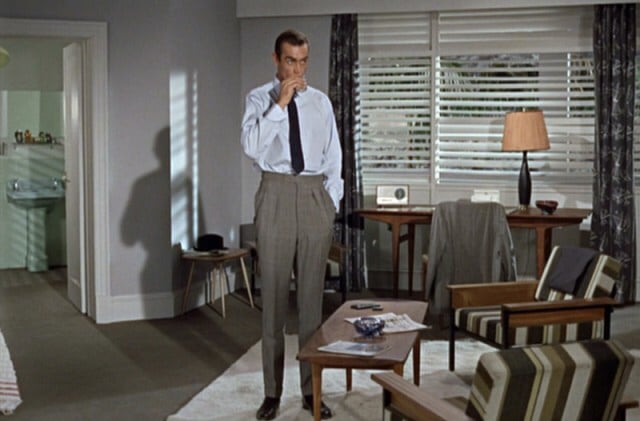
Connery as Bond in 1962’s Dr. No showcases a nicely tapered pleated pant, as well as the fact that in men’s style, what goes around, comes around.
Even though the pendulum on the cut of men’s clothes is beginning to swing in reverse, it won’t likely swing all the way back; a shape that remains clean and streamlined — if tweaked and pleated a little — will probably remain in style. Don’t dust off those MC Hammer pants just yet.
Lean towards double pleats. Double pleats are the sweet spot when it comes to the intersection of function and style. The second pleat helps keep the first one closed, but there are not so many that the front of one’s trousers looks overly busy.
Single pleats flow nicely into the crease of your trousers, offer less billow and a narrower silhouette, and thus look a little more modern. But they don’t offer as much flexibility, and lack an auxiliary pleat to help keep them shut. That means if you do go with single pleats, proper fit is even more important; you don’t want disproportional measurements to be tugging them open even more.
A third pleat serves no real function, and thus extraneously adds more fabric and fullness while widening your hips and looking dated.
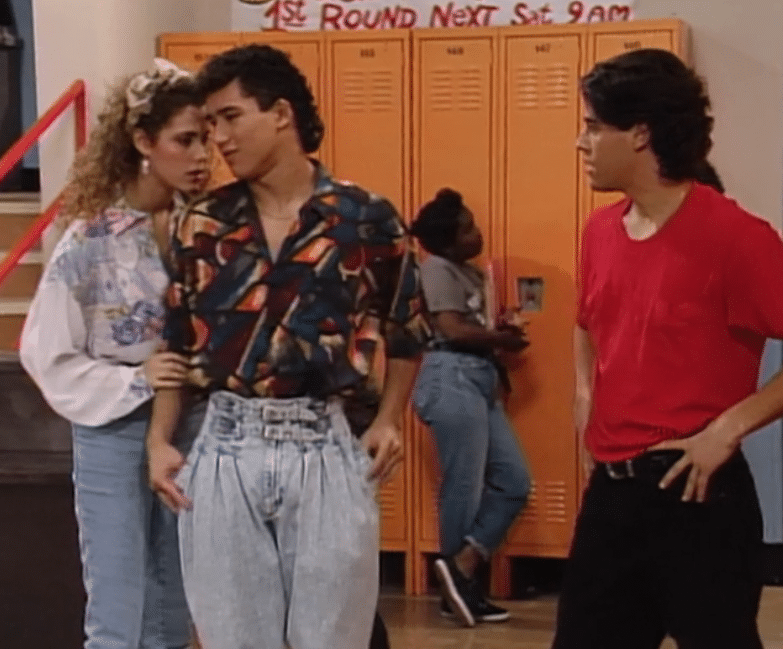
Too many pleats will widen out your hips. Though if you’ve got them on acid washed jeans, the pleats may be the least of your problems. Neither factor will kill your game with the pretty mamas out there though, if you’re as cool as AC Slater.
The more pleats up top, the more the trouser legs should be widened to balance things out; since you’re still going for a relatively narrow leg, you therefore want to stick to 1-2 pleats at the most.
Look for forward pleats. Compared to reverse pleats, forward pleats look narrower and more streamlined, keep the trouser front flatter, and, as they draw the eye inward rather outwards, are more slimming. Plus, they simply have a more classic look.
As mentioned, however, they can be hard to find off the rack in the States. It’s something to ask for if you’re having trousers custom made though.
Go with cuffs. The weight of cuffs at the bottom of trousers balances the weight of pleats up top, and keeps the fabric of the legs hanging nicely.
Wear at your natural waist. Slim-fitting trouser pants typically have a low rise that’s meant to be worn on or below your hips. Pleated pants are designed with a higher rise, and should be worn at your natural waist.
Balance your jacket with your pants. Don’t wear a slim, narrow jacket atop your pleated pants; since they’re cut a little wider, you want your jacket to complement this shape.
This is why even men who have slender lower halves and larger upper ones — those with smaller waists and chicken legs but bigger chests — will be better served by pleated rather than flat front pants just like their brethren who are big all over. While this body type could fit into the latter kind of trouser, narrow, flat front pants are made to be worn with narrow, slimmer jackets, which a man with a big chest would struggle to get into, creating a mismatch between upper and lower body. Pairing a wider cut pant with a wider cut jacket would create a more balanced look for the small-waisted but broad-shouldered fella.
Limit pleats to dressier pants. Pleats look better when folded into the finer materials of dressier pants, than the coarser, heavier materials of the more casual variety. Plus, pleated khakis still have that middle manager association to them that isn’t likely to go away soon.
If you’re still hesitant to try pleated pants because you’re worried they’ll look dated, or you’re in between needing the functionality of pleats and not, get started with a pair that sports a single, forward pleat, and a narrower, tapered leg. You’ll still end up with a pretty modern look, that feels a little more comfortable than what you’re used to.
It’s a shape that not-so-coincidentally harkens to the now popular jogger pant, and the pleated pants’ marriage of comfort and classic style, function and refinement, should be readily welcomed by the “athleisure” generation.
A Place for Pleats
For a couple decades now, all men, of every shape and size, have almost uniformly embraced tight-fitting flat front trousers, and, take it from Sherman, the results haven’t been pretty. It’s a style of pant that really only suits men with small waists (and chests, since the cut of the jacket should match the pants) so that many, if not most men have been attempting to stuff their muscles and girth into a trend that’s really never going to work well for them.
Rather than following the whims of fashion, men should choose a trouser style that suits their signature style and their body type, and generally stick with it. For bigger guys, that is and will be the pleated pant.
Rather than running scared from the pleat, embrace it for its function, embrace it for its style, and consider finding a place for it in your wardrobe.


